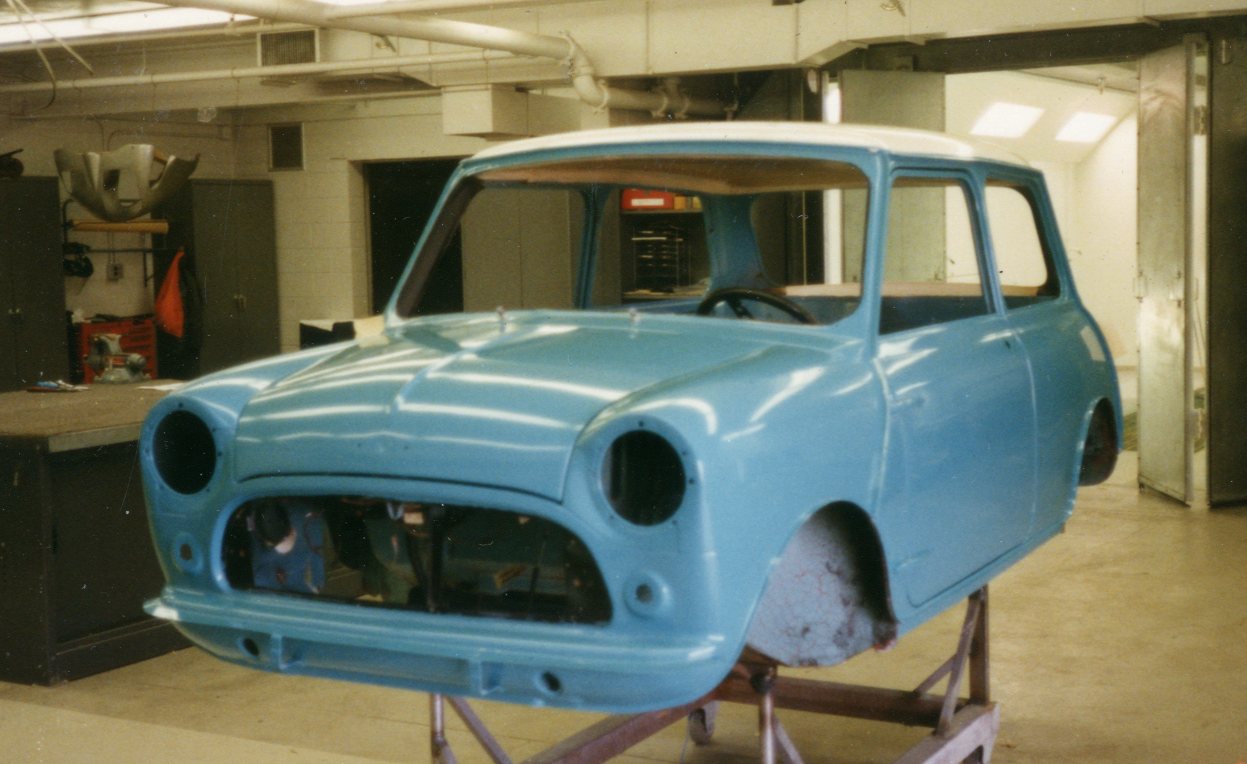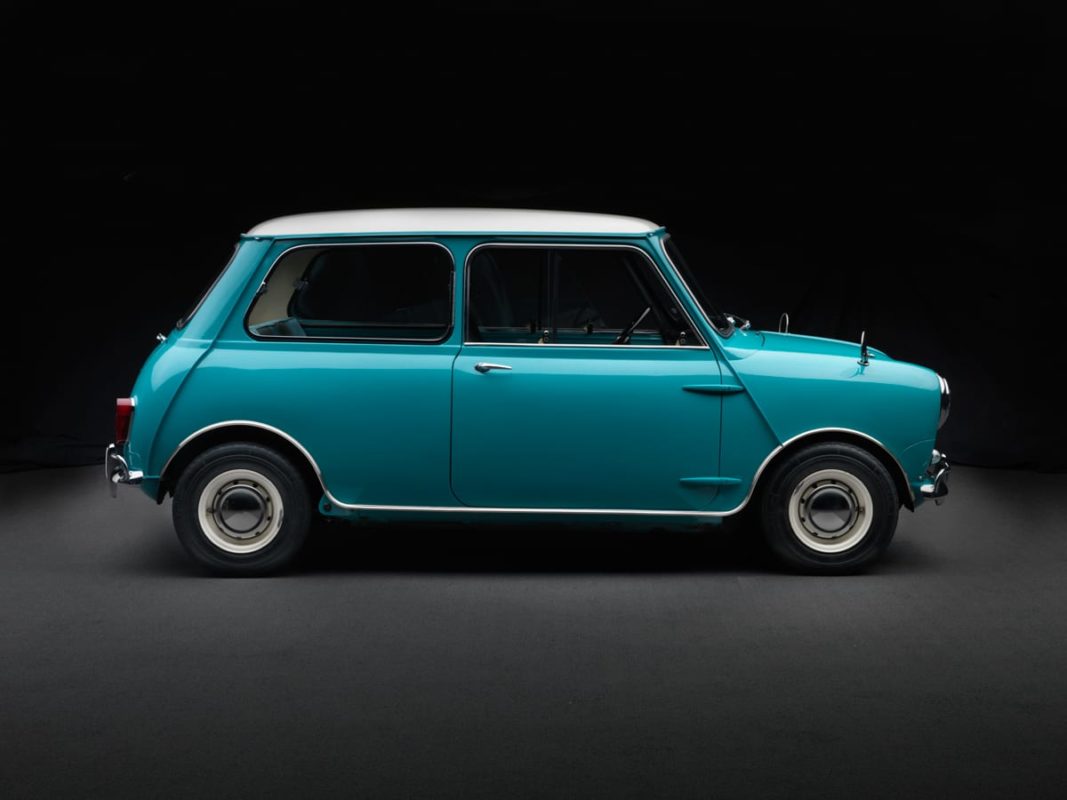Tech Specs
Four-cylinder in-line overhead valve engine. 1071cc (65.35 cubic inches). Horsepower: 70 bhp @ 6000 rpm.
Before/After
1964 Austin


About the 1964 Austin Cooper S
“If that car was not so ugly, I would shoot myself…That is the future of the motorcar,” declared Aurelio Lampredi, Ferrari’s chief designer after his first Mini drive. One of the last cars designed by one man, the brilliant if erratic Alec Issigonis, the Mini redefined the automobile. So radical was its architecture, essentially a box with wheels at each corner, featuring solid rubber springing, a front engine set crossways driving ten inch wheels via a gearbox in the engine’s sump, that the Mini presented hundreds of novel problems to be solved before it could become a practical reality.
Launched August 26, 1959, this new “working man’s car” proved as surprising in the market as it did on the drawing board. Despite brilliant design, sales started slowly. More surprising, sales were to style conscious higher-income buyers, such that the Mini became a chic hallmark of England’s swinging sixties.
Perhaps more surprising, this ultimate in practicality was the perfect platform for world champion racing car builder, John Cooper, to use in the production of a hotted-up sports sedan of devastating capability on road or track. In return for a £2 royalty per car, Cooper developed highly tuned 997cc versions, featuring twin carburetors, big valves and disc brakes, soon to be followed in 1963 by Cooper S models in 970cc, 1071cc and ultimately 1275cc displacement.
To the end of production in October 2000, over five million Minis of all types were produced, yet initially, the car proved no boon to its parent, BMC. Primitive costing systems caused management to seriously underprice the car, which failed to return a profit for much of its production run. Yet the Mini survived in production for four decades, proving Issigonis’s statement, “Stylists are employed to make things obsolescent…I design cars which cannot be obsolescent and therefore give value…”
Photos – Peter Harholdt







